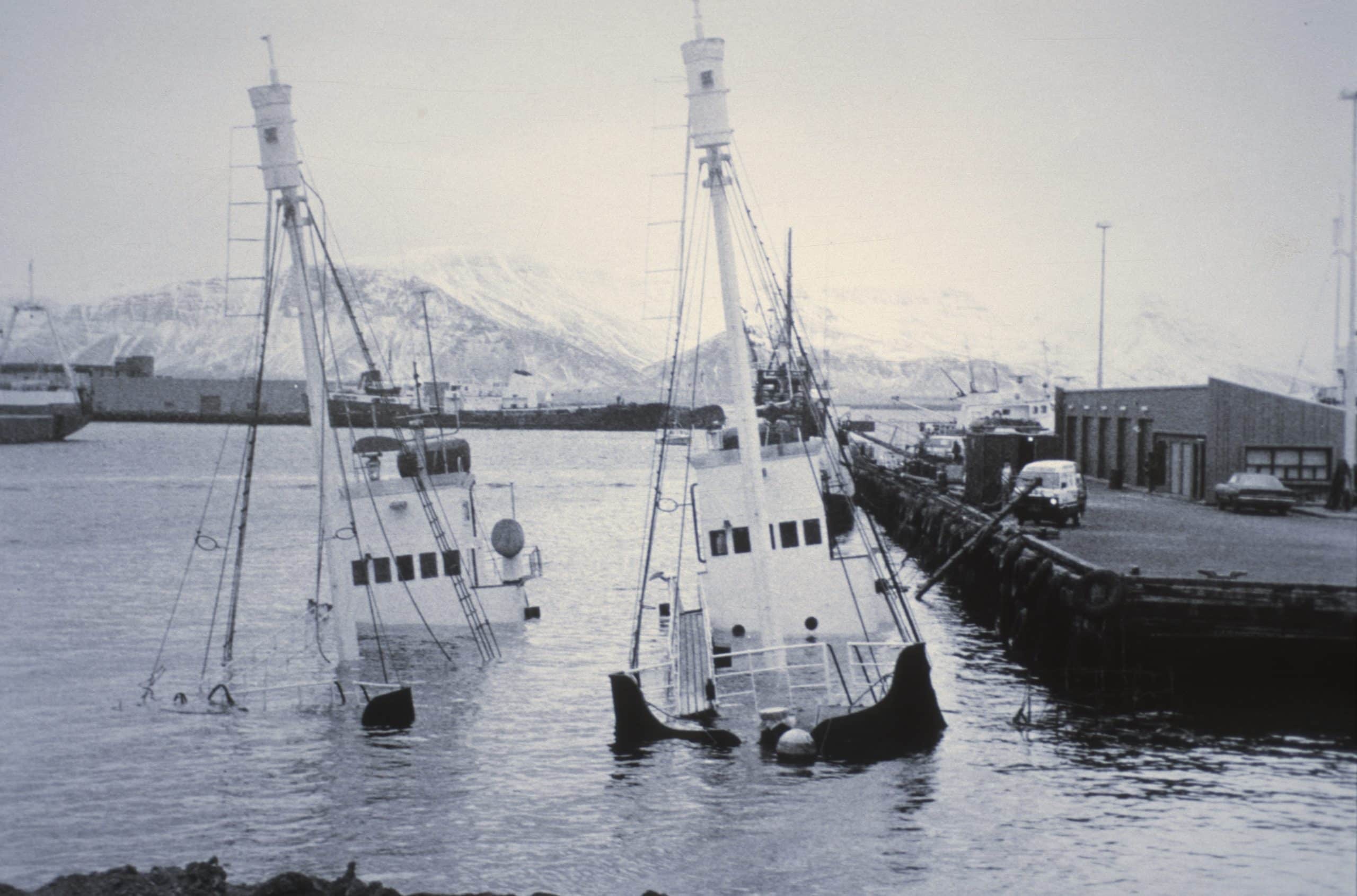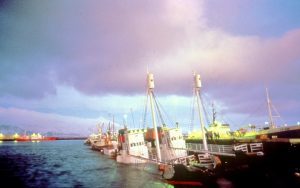Captain John Paul Jones once said, “I wish to have no connection with any ship that does not sail fast; for I intend to go in harm’s way.”
This is a philosophy I have practiced all my life. A ship is our most important asset. It has to be strong, long range and fast. The John Paul DeJoria fills the bill in all three categories, and thus is ideal for what we need in a ship to sail into harm’s way.
What exactly does it mean to sail into harm’s way and what does it require?
We have the ship, and we have the crew and I only accept crew members willing to risk their lives to defend our clients in the sea. This means going into a situation courageously with resolve and determination.
Way back in 1979, I set forth in my first vessel the Sea Shepherd. Our target was the pirate whaler Sierra, the most notorious whale-killing operation on the ocean. My objective, when leaving Boston to cross the Atlantic, was to find that ship and to ram and disable it. Aside from myself, there were 19 crew members.
On July 16, we found the Sierra and pursued it for 200 miles into the Portuguese port of Leixoes. I could not take action at sea because of bad weather. We tied up for custom clearance while the Sierra drifted in the harbor.
After clearing in with the authorities, I was notified that the Sierra was preparing to depart. I requested clearance and it was refused. There was no way I was going to let that pirate whaler escape, so I called a crew meeting on deck to announce that clearance be damned, we were going out to where the Sierra was drifting and we would ram that vessel.
Sure to be arrested
I remember saying, “Today is the day that the Sierra dies.” I said to the crew, “I can’t guarantee you won’t be hurt but I can pretty much guarantee that we will all be arrested, so the choice is yours. If you are with me, great, and if you are not, you have 10 minutes to pack and be on the dock.”
Ten minutes later, 17 crew members were on the dock, leaving me with only Chief Engineer Peter Woof from Australia and 3rd Engineer Jerry Doran from Hawaii.
We cast off and built-up speed as we crossed the harbor. We smashed into the bow of the Sierra to damage the harpoon and then made a 360-degree turn to starboard, bringing us around on the port side of the whalers. I saw Norwegian Captain Arvid Nordengen raise his rifle and heard bullets clang on the steel bridge wing rail. He could not stop us, and at full speed we struck the port side hull just behind the forepeak, ripping open the hull into the freezer compartment. We then disengaged and I left the harbor on a northerly course, pursued by a Portuguese naval vessel that threatened to fire on us. I should have called their bluff, but with only myself and two crew, we submitted and agreed to return to port. That was the only mistake I made that day.
When we were again at dockside I was taken before the port captain. He was going to charge me with gross criminal negligence until I pointed out that there was nothing negligent about what we did. We hit that ship deliberately. He laughed, and then said, “we don’t know who owns that ship. They have not made a complaint and until they do, you are free to go.”
As I left his office, some of the crew who had deserted were there and one of them said, “If I knew we would get away with it, I would have stayed.”
Risk everything
I replied that I did not think we would, but sometimes you must go into situations where there does not look like an escape — to go all in and risk everything for the mission.
The Sierra’s career was ended, no one was arrested, and it was our first major victory — a victory that would not have been achieved without going all in and risking everything to shut down the most notorious pirate whaler on the ocean.
I also learned an important lesson, and that was to call the bluff of any navy pursuing us. So in 1981, we eluded the Soviet navy off Siberia. In 1985 and 1986, we fended off an attack from the Faroese who were shooting at us. Then in 1994, it was the Norwegian navy off the
northern coast of Norway, where they rammed us, shot at us, and dropped depth charges under our hull. And of course, we successfully engaged with the Japanese coast guard who were onboard the Japanese factory ship Nisshin Maru.
Little is accomplished without risk. Any strategy without risk will most likely fail.
There are risks going to the waters off Iceland this summer. Although we will be operating outside of Iceland’s legal territorial waters, I am certain the Icelandic coast guard will be monitoring our movements. We have no intention of causing injury to the whalers, and we intend to operate lawfully in opposition to Kristján Loftsson’s illegal activities. His whaling operations are in violation of the International Whaling Commission’s global moratorium on commercial whaling. He is also in violation of the Icelandic Animal Welfare Act.
However, all possibilities must be considered, and if for some reason Iceland overreacts and physically attacks us, we will respond with our cameras. And if we are physically stopped, we will turn any charges against us towards putting Iceland’s illegal whaling operations on trial.
All my life my critics have warned me that I would be killed or imprisoned for the risks that I have taken. Yet, from 1971 until now — a period of 52 years — I have never been seriously injured nor convicted of a felony crime. Yes, I have been shot at and shot, been rammed and had stun grenades thrown at me; I’ve been depth charged and physically beaten … but overall, nothing serious. I have spent time in jail awaiting trials in the Netherlands, Iceland and Canada, after which I was released. I have been sued civilly many times and won each time.
Arrests, threats, lawsuits and assaults are simply par for the course and well worth the risk. When I think of the hundreds of endangered fin whales that Loftsson, this modern day Captain Ahab desires to slaughter, I feel in my heart that such risks are justified. To save the life of a highly intelligent, self-aware sentient being like a whale or a dolphin is incredibly satisfying. To know that whales are swimming free that would otherwise be dead fills my heart with great joy.
And that is why we do what we do. My ship, my crew and I departed for Iceland on May 31, 2023, with the objective of stopping the killing of up to 169 endangered fin whales in the waters between Iceland and Greenland.







